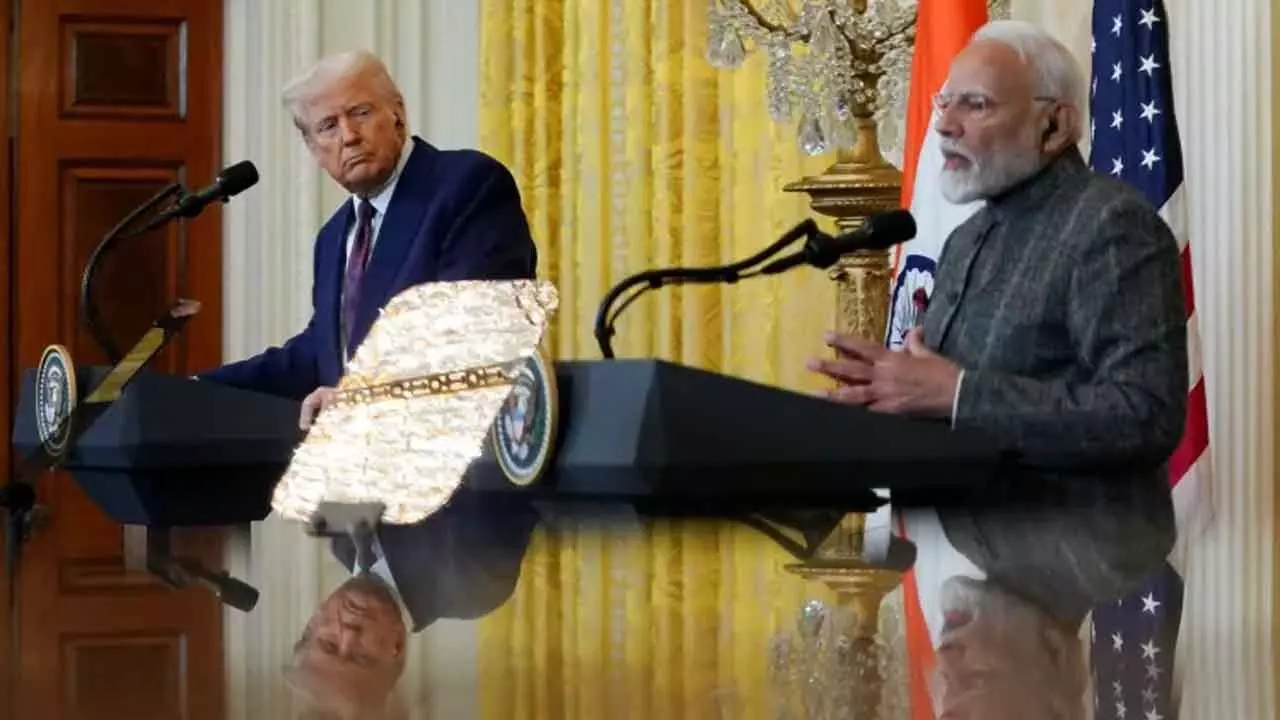Trump’s 50% Tariffs on India Aim to Push Russia-Ukraine Talks, Says White House
White House says Trump’s India sanctions are part of broader strategy to pressure Moscow over Ukraine conflict.
Trump’s India Sanctions Part of Strategy to End Russia-Ukraine War, Officials Say

US President Donald Trump has doubled tariffs on Indian goods to 50%, a move the White House says is intended to pressure Russia to engage in Ukraine peace negotiations.
White House Press Secretary Karoline Leavitt said the sanctions are part of Trump’s broader effort to “bring the war to a close swiftly.” Speaking at a late-night press briefing, she stressed that Trump’s measures are designed to accelerate talks rather than delay them.
Tariffs Tied to Russian Oil and Defense Purchases
Earlier this month, Trump imposed steep duties, including a 25% penalty tied to India’s imports of Russian crude oil and defense equipment.
• US Treasury Secretary Scott Bessent criticized New Delhi’s trade with Moscow, calling it “unacceptable” and accusing India of profiting from discounted Russian oil.
• He noted that India’s Russian oil imports have surged from less than 1% before the invasion to 42% today, compared to China’s relatively stable dependence.
Diplomatic Push with Kyiv and Moscow
Trump’s decision follows his meeting with Ukrainian President Volodymyr Zelensky at the White House, which both sides described as highly productive.
• Trump has indicated plans to facilitate trilateral discussions with Russia and Ukraine, with NATO leaders also briefed within 48 hours of his private meeting with President Vladimir Putin.
• “The President’s immediate engagement with European leaders shows his commitment to ending the war — something the previous administration did not do,” Leavitt said.
India Pushes Back Against Sanctions
New Delhi strongly rejected Washington’s accusations.
• The Ministry of External Affairs (MEA) called the measures “unjustified and unreasonable,” emphasizing that India is protecting its economic security.
• India pointed out that Western nations continue to import Russian energy and commodities, even as they criticize others.
• India — the world’s third-largest oil consumer, importing 88% of its energy needs — has turned to Russian oil after Europe redirected its supplies, with Moscow now providing about 40% of India’s crude imports.
Next Steps and Possible Secondary Sanctions
Bessent has hinted that additional tariffs could follow, depending on the outcome of Trump’s recent meeting with Putin in Alaska, which ended without a breakthrough.
Trump maintains that targeting India, rather than China, reflects India’s rapid shift in energy sourcing from Russia, while China’s import levels have remained steady.

